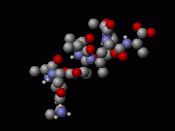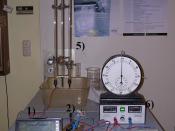A molecule of water consists of one oxygen and two hydrogen atoms joined by covalent bonds. Water as a liquid is vital to existence and plays extremely important roles in many aspects of both plant and animal lives. These aspects include temperature control, support, chemical reactions, transport and protection.
Without the ability to control our temperature, we as humans would not be able to survive in our natural environment. If our internal body temperature was to rise or fall even a few degrees centigrade our body would not be able to carry out its everyday functions efficiently and this could lead to loss of ability to function at all. Therefore thermoregulation is very important and water plays a part in this. One method of reducing internal body heat is sweating; sweat is mostly made up of water. The structure of the water molecule means that it has very high melting and boiling points for a molecule of its nature because of the strong attraction between them.
This means that a large amount of energy is needed before the molecules begin to move about and therefore change state. It is because of this high latent heat of vaporisation that water is an effective coolant; energy from the body is used to evaporate sweat that forms on the surface of the skin from the sweat glands and this results in a reduction in body temperature as energy is used up. Also, cells are made up of 80% water and the specific heat capacity of water means that bulky organisms have fairly stable temperatures.
Support is vital to both plants and animals and often water plays a significant part in this. In plants water is responsible for making the cells of the plant turgid by osmosis and therefore providing support, particularly in...


